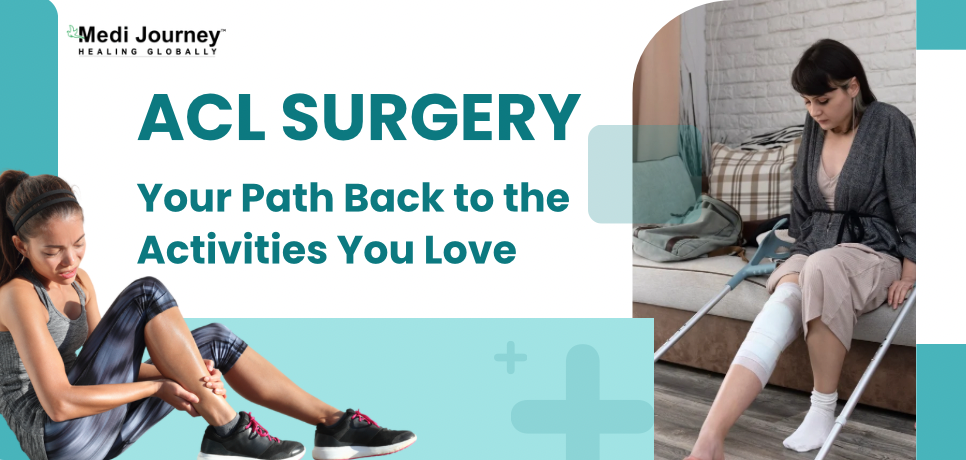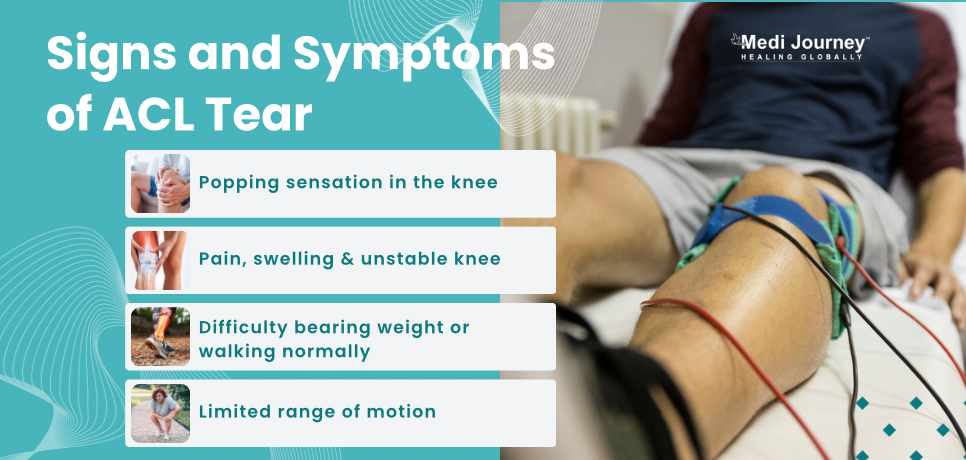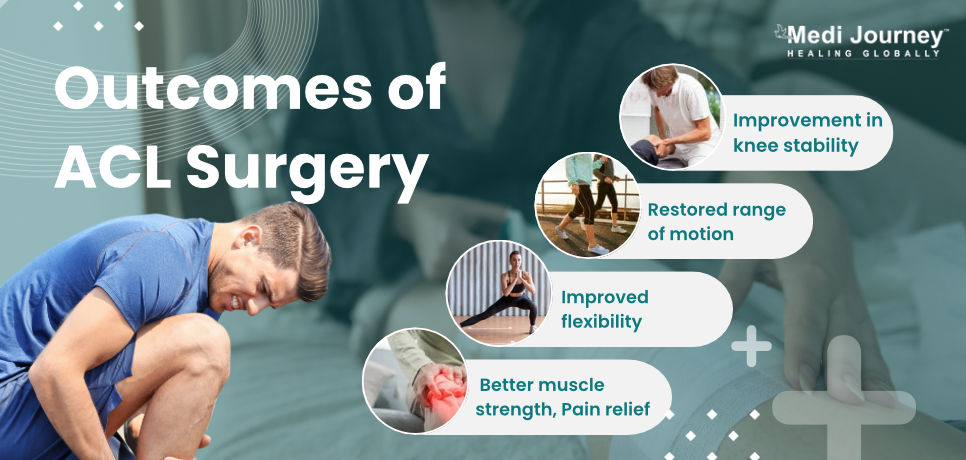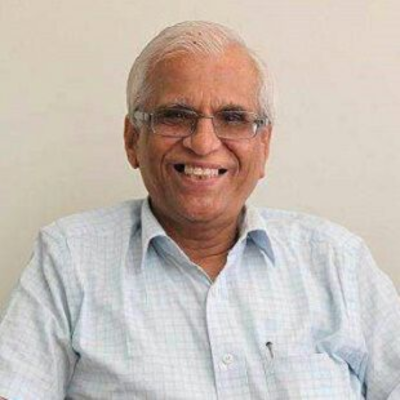The Role of Government Initiatives in Promoting Medical Tourism in India
 02 April,2025
Read More
02 April,2025
Read More
Enquire now in case of any assistance needed
 09 April,2024
09 April,2024

The anterior cruciate ligament is one of the major knee ligaments that helps stabilize the joint. Unfortunately, ACL injuries are common, especially among athletes who play sports that involve quick changes in direction, jumping, or pivoting.
It's essential to consider the emotional impact of an ACL injury. Suffering a significant knee injury can be distressing and frustrating, especially for athletes or individuals with an active lifestyle. The fear of a prolonged recovery and uncertainty about returning to normal activities can affect mental well-being.
Proper education and knowledge about treatment can help improve disease-related anxiety and provide better outcomes. This blog aims to do just that. We will explore the symptoms, causes, preparation for surgery, different surgical techniques, postoperative care, and long-term outlook of ACL surgery.
ACL surgery is the standard treatment modality for ACL injuries. ACL tears or injuries can be classified depending on their severity and the extent of damage to the ligament.
Orthopedic surgeons manage ACL injuries, which can be managed by reconstruction or repair. ACL repair is an older technique that has been performed since the 1970s. It involves sewing the torn ligaments with sutures. In ACL reconstruction, the ligament is completely rebuilt with the help of grafts or tissues. It has better surgical outcomes and lower failure rates compared to ACL repair.
With advancements in orthopedic medicine, surgeons now perform ACL surgeries using minimally invasive arthroscopic techniques. It has led to a significant reduction in postoperative complications and a quicker recovery.
ACL surgery usually involves reconstructing the torn ligament using a graft, which can be harvested from different sources. The two primary types of grafts used for ACL reconstruction are –
The graft choice depends on various factors, including the surgeon's preference, the patient's age and activity level, and concurrent injuries. Discussing the different options with your surgeon will help determine the most suitable surgery for your situation.
ACL injuries can happen to anyone, regardless of age or athletic ability. When the ACL is torn or ruptured, it can lead to instability and loss of function in the knee joint. ACL tear can make participating in activities requiring strong knee movements difficult. Common causes of ACL injuries are –
Understanding the risk factors and common causes associated with ACL injuries can help individuals take proactive steps to protect their knee health and overall well-being.

If you suspect an ACL injury, seeking prompt medical attention is crucial. An orthopedic expert will perform a physical examination, possibly combined with imaging tests like an MRI, to evaluate the grade of injury. Common signs and symptoms of ACL injury are –
It's essential to have a detailed understanding of what to expect during ACL surgery. Before the procedure, your treating surgeon will provide specific preparation instructions, including fasting guidelines and medication usage.
ACL (Anterior Cruciate Ligament) reconstruction surgery involves repairing a torn or damaged ACL, a major ligament in the knee. The surgeon conducts a thorough examination, reviewing the patient's medical history and performing physical assessments. Diagnostic tools such as MRI scans assist the surgeon in assessing the extent of ACL damage and planning the surgery. The steps in ACL reconstruction surgery include:
A rehabilitation program is crucial for a successful recovery after ACL surgery. The process typically begins immediately after the surgery and continues for several months, gradually progressing from basic exercises to advanced activities.

The long-term outlook for individuals who undergo ACL surgery is generally positive. Patients experience remarkable improvement in knee stability and return to their previous activities, including sports, within approximately six to twelve months post-surgery.
A rehabilitation program is crucial in recovering from a torn ACL. Physical therapy sessions are recommended to restore range of motion, improve flexibility, and strengthen the knee muscles.
Furthermore, advancements in surgical techniques have improved ACL reconstruction outcomes. Orthopedic surgeons now have access to minimally invasive procedures, specialized graft options, and enhanced imaging tools, allowing for more precise graft placement and better preservation of surrounding tissues.
It's important to note that the success of ACL surgery depends on various factors, such as the extent of the initial injury, surgical technique, adherence to rehabilitation protocols, and individual healing response.
On average, ACL surgery has a success rate of 80 to 95% when performed by a skilled orthopedic surgeon at a well-equipped hospital.
While most individuals can expect to regain normal function, some may experience residual symptoms or be at risk of developing arthritis in the knee. However, these complications are uncommon and occur in about 10% of people.
In conclusion, ACL surgery is a standard procedure for managing injuries to the anterior cruciate ligament. Knowing the symptoms, causes, and treatment options available can help individuals make informed decisions. By following proper pre-operative preparation, choosing appropriate surgical techniques, engaging in post-operative rehabilitation, and maintaining realistic expectations, individuals can maximize their chances for a successful recovery and long-term knee health.
Doctor of Pharmacy
Dr. Deepanshu Siwach is a skilled clinical pharmacist with a Doctor of Pharmacy degree.?He has 4+?years of experience and has worked with thousands of patients. He has been associated with some of the top hospitals, such as Artemis Gurgaon.
Director
Orthopedic and Joint Replacement Surgeon
Aakash Healthcare Super Speciality Hospital, Dwarka, New Delhi
Dr. Aashish Chaudhry is amongst the best Orthopedic Surgeons, with over 23 years of experience....
Senior Director
Gynecologist and Obstetrician, IVF Specialist
Max Smart Super Speciality Hospital, Saket, New Delhi
Book Appointment WhatsApp UsSenior Director
Gynecologist and Obstetrician
Max Smart Super Speciality Hospital, Saket, New Delhi
Book Appointment WhatsApp UsSenior Director
Gynecologist and Obstetrician
Max Smart Super Speciality Hospital, Saket, New Delhi
Book Appointment WhatsApp UsSenior Director
Gynecologist and Obstetrician
Max Smart Super Speciality Hospital, Saket, New Delhi
Book Appointment WhatsApp UsSenior Consultant
Medical Oncologist
Nanavati-Max Super Speciality Hospital, Mumbai
Book Appointment WhatsApp UsSenior Director
Gynecologist and Obstetrician, IVF Specialist
Max Super Speciality Hospital, Shalimar Bagh, New Delhi
Book Appointment WhatsApp UsSenior Director
Gynecologist and Obstetrician, IVF Specialist
Max Smart Super Speciality Hospital, Saket, New Delhi
Book Appointment WhatsApp UsSenior Director
Gynecologist and Obstetrician
Max Smart Super Speciality Hospital, Saket, New Delhi
Book Appointment WhatsApp UsSenior Director
Gynecologist and Obstetrician
Max Smart Super Speciality Hospital, Saket, New Delhi
Book Appointment WhatsApp UsSenior Director
Gynecologist and Obstetrician
Max Smart Super Speciality Hospital, Saket, New Delhi
Book Appointment WhatsApp UsSenior Consultant
Medical Oncologist
Nanavati-Max Super Speciality Hospital, Mumbai
Book Appointment WhatsApp UsSenior Director
Gynecologist and Obstetrician, IVF Specialist
Max Super Speciality Hospital, Shalimar Bagh, New Delhi
Book Appointment WhatsApp UsSenior Director
Gynecologist and Obstetrician, IVF Specialist
Max Smart Super Speciality Hospital, Saket, New Delhi
Book Appointment WhatsApp UsSenior Director
Gynecologist and Obstetrician
Max Smart Super Speciality Hospital, Saket, New Delhi
Book Appointment WhatsApp UsFill up the form and get assured assitance within 24 hrs!
The Art of Effective Communication
 24 January,2025
Read More
24 January,2025
Read More
Trusted by Patients
"I am Asim from Bangladesh and was looking for treatment in India for neuro. I visited many websites to get the complete information regarding the treatment but I was not satisfied as I was getting confused. In the meanwhile, one of my friends suggested I seek help from Medi Journey as he experienced his medical journey very smoothly and was satisfied with it. They have filtered the top 10 doctors as per experience, the success rate of surgery & profile, so it helps us to choose the best treatment in India. "
"For my knee surgery, Medi Journey guided me to BLK Hospital where I received exceptional care. The team's support and the expertise at BLK Hospital exceeded my expectations. Thank you Medi Journey for making my medical journey stress-free. "
"I came from Iraq for my granddaughter's eye surgery in India facilitated by Medi Journey, due to critical cases they advised us to get a second opinion from the different hospitals before going to surgery. Finally, we went to Fortis Escort Hospital, which helped us to get more confidence for diagnosis. Fortis Escort Hospital has the best eye surgeon team with the latest instruments. Thanks to all team members for providing a high-quality treatment in India at an affordable cost. "
"I came for my hair transplant in India, before coming I was so confused about choosing the best clinic and surgeon for me. But thanks to God one of my friends had a hair transplant in India through Medi Journey. He recommended me to go with them. I am completely happy with my experience with them. They were always very fast in their responses to me. the success rate of my hair transplant surgery is 100%."
"Artemis Hospital, suggested by Medi Journey, turned out to be a great choice for my treatment. The personalized assistance and medical care were exceptional. I'm grateful to Medi Journey for guiding me to a hospital that perfectly matched my needs. Highly recommended! "
"I came from Afghanistan for my treatment in India at Jaypee Hospital, Noida. I had a fantastic experience with Medi Journey. Kudos to them for their incredible support during my medical journey. They not only took care of all the logistics but also connected me with a fantastic healthcare team. Efficient, caring, and highly recommended for a hassle-free medical tourism experience."
"I am Adam from Kano, Nigeria, one of my friends from Nigeria was facilitated by Medi Journey, and he recommended us to go with them. I sent my all reports to them and within 48 hours they reverted with 4 options from different hospitals. They helped me to get a Visa letter from the hospital, arrange pick-up from the airport, and book a hotel for me. Their team is very honest and throughout our stay in India they are with us they are caring for us like his family members. BLK Hospital is the best hospital in India with a top surgical oncologist surgeon team, a very advanced OT, and a Radiotherapy department. I wish more success to Medi Journey. "
"Great experience at the Max Hospital for my spine surgery and was successfully done. I thank my neurosurgeon and his entire team. I recommended all of my country's people to Medi Journey for treatment in India, they choose the best hospital, the best doctors, and the best cost for patients."
"I came to India from Dhaka, Bangladesh for my father-in-law's cardiac surgery at Fortis Hospital. I was confused about choosing the best surgeon for him before coming, but their team helped me to choose the best hospital and best cardiac surgeon in India with very good cost and 100% success rate of surgery. I am very happy with the services, really they make my journey so comfortable that make me feel at home. Thanks again and I like people to choose "Medi Journey" as your travel guide. "
"I am Mohammad from Bangladesh came to India for my general health checkup. Medi Journey offers me the complete package including Pick-up from the airport, hotel services, and 24-hour assistance. They guide you to choose the best hospital in India, the best cost of treatment with top-most doctors and give you complete information about hotel booking, and pick-up from the airport before coming to India They have the best team to help. Always choose Medi Journey for your treatment in India."





